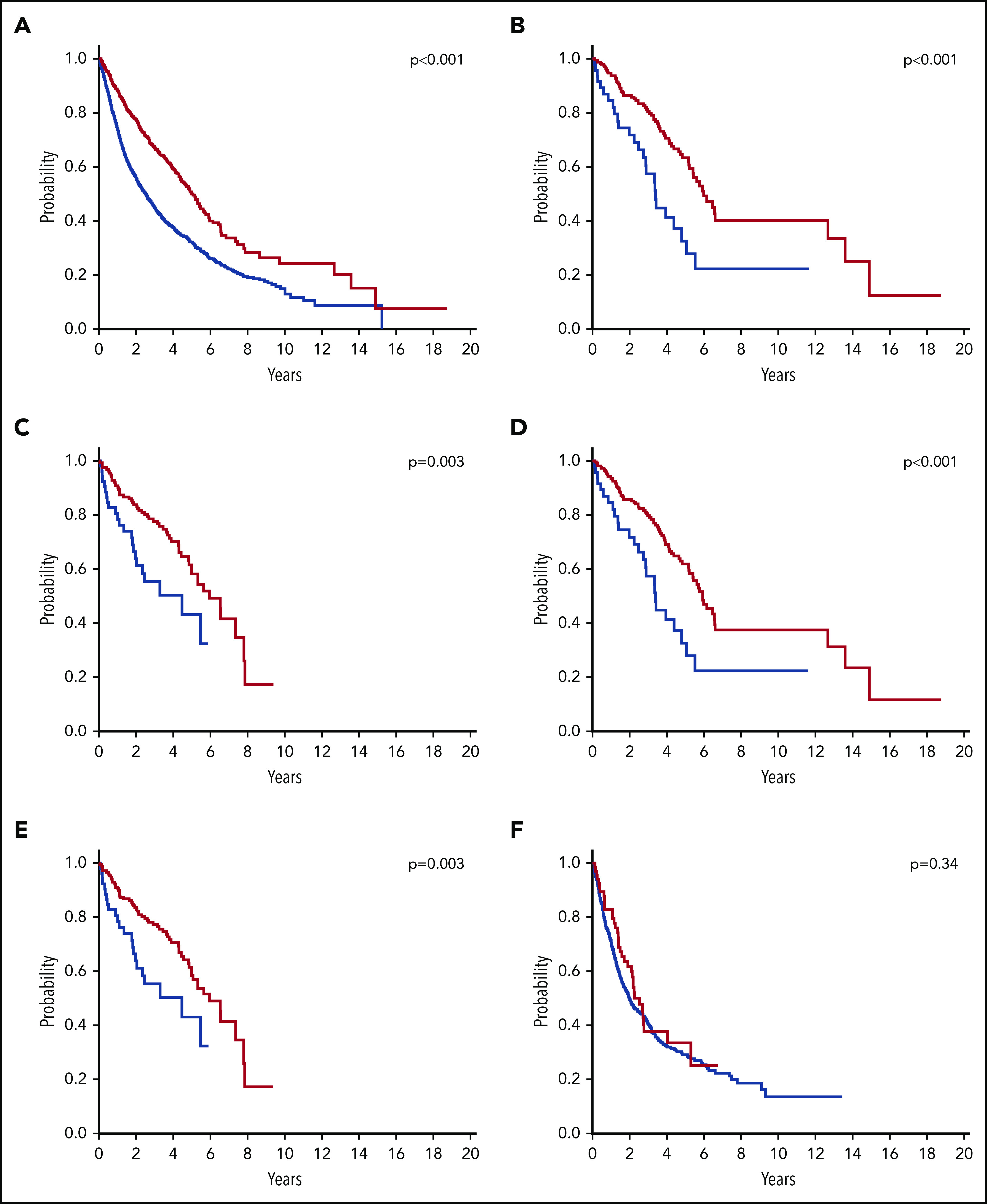Figure 4.

OS of patients with MDS classified according to SF3B1 mutation status. (A) OS of the whole MDS population according to SF3B1 mutation status. Patients with SF3B1-mutated MDS (red curve, n = 769) have a significantly longer survival compared with SF3B1-unmutated MDS patients (blue curve, n = 2555) (P < .001). (B) OS of SF3B1-mutated (red curve, n = 267) and unmutated (blue curve, n = 54) patients with RARS (P < .001). (C) OS of SF3B1-mutated (red curve, n = 171) and unmutated (blue curve, n = 56) patients with RCMD-RS (P = .003). (D) OS of patients with SF3B1-mutated RARS or RCUD (red curve, n = 287) compared to SF3B1-unmutated patients with RARS (blue curve, n = 54) (P < .001). This group overlaps the category of MDS-RS-SLD according to 2016 WHO criteria, except that it comprises occasional patients with SF3B1-mutation and <5% RS. (E) OS of patients with SF3B1-mutated RCMD-RS or RCMD (red curve, n = 189) compared to SF3B1-unmutated patients with RCMD-RS (blue curve, n = 56) (P = .003). This group overlaps the category of MDS-RS-MLD according to 2016 WHO criteria, except that it comprises occasional patients with SF3B1-mutation and <5% RS.(F) OS of SF3B1-mutated (red curve, n = 77) and unmutated patients (blue curve, n = 823) with MDS-EB (P = .34).
